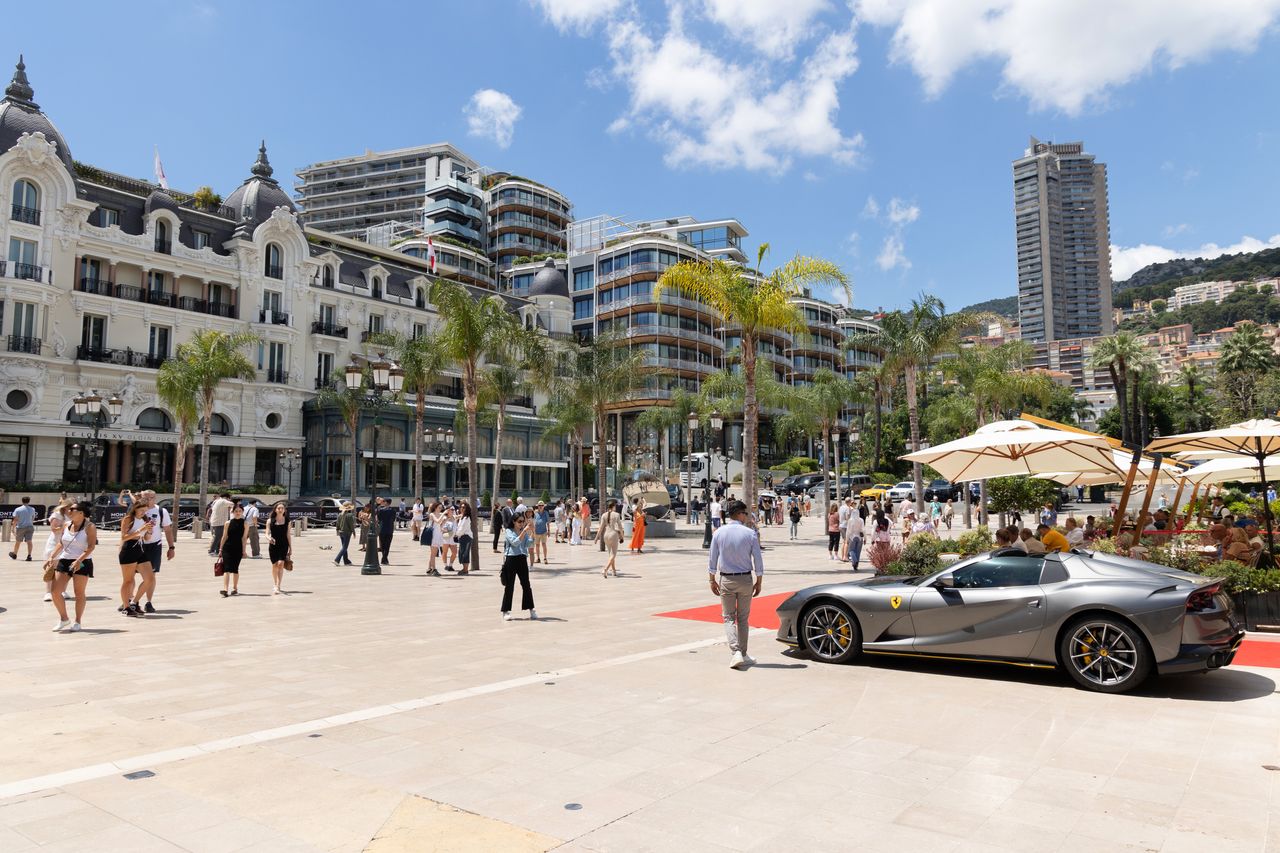Trading Mansions Sounds Like a Dream. It’s Also a More Sustainable Way to Travel.
For many, the idea of doing a home exchange is enticing: The thrill of a new destination, calling an inspired new space home away from home, living like a local for a little while. But what happens if you have a sprawling estate on the ocean to offer yet can’t find a property swap that comes close to the size and luxury of your own?
Enter: HomeExchange Collection, a division of Paris-based HomeExchange, a 30-year-old home-swapping company with over 100,000 residences across 133 countries and teams in Zagreb, Croatia, and Cambridge, Massachusetts. The new division launched last year and focuses solely on luxury property trades.
“Some of our members were over flooded with requests from people who wanted to exchange homes, yet their houses just weren’t as nice,” the company’s co-founder Emmanuel Arnaud says. “That’s why we decided to launch HomeExchange Collection, to better cater to the needs of clients with super-luxurious homes. It’s a space where they can meet other like-minded travellers who want to exchange their little piece of paradise they’ve built all around the world,” Arnaud says.
THE ITEM
HomeExchange Collection is an uber-exclusive community of home (and yacht and farm and castle) owners. And the criteria for membership is stringent. Homes are required to be valued at US$1.5 million or more, though US$2 million to US$10 million is typical.
“Location is a big part of it as well as amenities,” Arnaud says. “For example, if your house doesn’t have a pool in a prime sunny location, it’s going to be harder to make the cut.”
The houses themselves are anything but ordinary. Many come with five-star amenities such as boats, tennis courts, gyms, notable artworks, pools, daily housekeeping, and private chefs. Some of the most luxurious offerings include a 6,700-square-foot mansion in Chiang Mai, Thailand, with a full-time gardener, chef, maid, and part-time massage therapist; a penthouse in Manhattan’s Tribeca neighbourhood with a 750-square-foot terrace; a coffee farm in Sao Paulo, Brazil; and a hillside villa in San Miguel de Allende, Mexico, with a60-foot solar-heated lap pool and hot tub on the terrace.

Courtesy of HomeExchange Collection
Exchanges needn’t be reciprocal or immediate, either. If a member lends their home without reciprocity, they get GuestPoints to bank for a stay somewhere else at another time.
Members of the HomeExchange Collection can lend their homes to each other for a weekend, week, or month—and all include the benefit of their host’s insider intel. Other perks include a 100% flexible cancellation policy for guests, up to US$2 million in property damage protection, and access to the member service team 24/7.
PRICE
If your home is selected, an annual membership to HomeExchange Collection costs US$1,000, which gives members the opportunity for unlimited exchanges during the calendar year.
DESCRIPTION
With over 4,000 luxury homes in over 70 countries across the globe, from France and Italy to Thailand, Australia, and the U.A.E., even the most affluent are reconsidering the way they vacation. “Covid has invited everyone to rethink being in shared, public spaces, and instead having a whole place to themselves,” Arnaud says.
It’s a shift happening, in part, Arnaud says, because of growing environmental awareness.
“People are rethinking their relationship to consumption,” he says. “The idea that you have this very, very nice home sitting idle while you’re paying to be at a hotel sounds a bit absurd. Why not use these homes which would otherwise be empty?”
WHAT’S THE GOOD?
As a certified B Corp, HomeExchange Collection meets high standards of social and environmental performance, transparency, and accountability—and it’s the definition of responsible tourism. By nature, the concept of home exchanging is a more sustainable way to travel. By using pre-existing accommodations and encouraging people to live like locals, the local ecosystem remains undisturbed.
“We think our approach makes better use of the existing infrastructure, the existing homes, rather than building new homes and hotels,” Arnaud says.
The company takes its commitment to the environment one step further by calculating its carbon footprint every year, trying to reduce it, and contributing to global carbon neutrality by investing in social and environmental projects.
Meanwhile, members, through HomeExchange’s Solidarity group, can open their homes to relief workers or affected members in instances such as pandemics, fires, earthquakes, hurricanes, floods, or war.
“It started with Covid when we realized we had a lot of homes available and a lot of people who wanted to help. We launched the Solidarity program to help frontline workers in hospitals to be able to have a place where they could stay without having to commute back and forth,” Arnaud says. The program was then expanded to house Ukrainian refugees.
WHAT’S NEXT
Aside from continuing to grow membership and properties worldwide, Arnaud’s mission is for everyone to have the opportunity to go on vacation. The company has already partnered with an organisation in France, Le Secours Catholique, which helps low-income families travel.
“We want to be able to help people go on a vacation, no matter who they are, and we are looking for the right kind of partners and the right kind of ways to put that into place on a wider scale,” Arnaud says.
 Copyright 2020, Dow Jones & Company, Inc. All Rights Reserved Worldwide. LEARN MORE
Copyright 2020, Dow Jones & Company, Inc. All Rights Reserved Worldwide. LEARN MORE
This stylish family home combines a classic palette and finishes with a flexible floorplan
Just 55 minutes from Sydney, make this your creative getaway located in the majestic Hawkesbury region.
As Paris makes its final preparations for the Olympic games, its residents are busy with their own—packing their suitcases, confirming their reservations, and getting out of town.
Worried about the hordes of crowds and overall chaos the Olympics could bring, Parisians are fleeing the city in droves and inundating resort cities around the country. Hotels and holiday rentals in some of France’s most popular vacation destinations—from the French Riviera in the south to the beaches of Normandy in the north—say they are expecting massive crowds this year in advance of the Olympics. The games will run from July 26-Aug. 1.
“It’s already a major holiday season for us, and beyond that, we have the Olympics,” says Stéphane Personeni, general manager of the Lily of the Valley hotel in Saint Tropez. “People began booking early this year.”
Personeni’s hotel typically has no issues filling its rooms each summer—by May of each year, the luxury hotel typically finds itself completely booked out for the months of July and August. But this year, the 53-room hotel began filling up for summer reservations in February.
“We told our regular guests that everything—hotels, apartments, villas—are going to be hard to find this summer,” Personeni says. His neighbours around Saint Tropez say they’re similarly booked up.
As of March, the online marketplace Gens de Confiance (“Trusted People”), saw a 50% increase in reservations from Parisians seeking vacation rentals outside the capital during the Olympics.
Already, August is a popular vacation time for the French. With a minimum of five weeks of vacation mandated by law, many decide to take the entire month off, renting out villas in beachside destinations for longer periods.
But beyond the typical August travel, the Olympics are having a real impact, says Bertille Marchal, a spokesperson for Gens de Confiance.
“We’ve seen nearly three times more reservations for the dates of the Olympics than the following two weeks,” Marchal says. “The increase is definitely linked to the Olympic Games.”

Getty Images
According to the site, the most sought-out vacation destinations are Morbihan and Loire-Atlantique, a seaside region in the northwest; le Var, a coastal area within the southeast of France along the Côte d’Azur; and the island of Corsica in the Mediterranean.
Meanwhile, the Olympics haven’t necessarily been a boon to foreign tourism in the country. Many tourists who might have otherwise come to France are avoiding it this year in favour of other European capitals. In Paris, demand for stays at high-end hotels has collapsed, with bookings down 50% in July compared to last year, according to UMIH Prestige, which represents hotels charging at least €800 ($865) a night for rooms.
Earlier this year, high-end restaurants and concierges said the Olympics might even be an opportunity to score a hard-get-seat at the city’s fine dining.
In the Occitanie region in southwest France, the overall number of reservations this summer hasn’t changed much from last year, says Vincent Gare, president of the regional tourism committee there.
“But looking further at the numbers, we do see an increase in the clientele coming from the Paris region,” Gare told Le Figaro, noting that the increase in reservations has fallen directly on the dates of the Olympic games.
Michel Barré, a retiree living in Paris’s Le Marais neighbourhood, is one of those opting for the beach rather than the opening ceremony. In January, he booked a stay in Normandy for two weeks.
“Even though it’s a major European capital, Paris is still a small city—it’s a massive effort to host all of these events,” Barré says. “The Olympics are going to be a mess.”
More than anything, he just wants some calm after an event-filled summer in Paris, which just before the Olympics experienced the drama of a snap election called by Macron.
“It’s been a hectic summer here,” he says.

AFP via Getty Images
Parisians—Barré included—feel that the city, by over-catering to its tourists, is driving out many residents.
Parts of the Seine—usually one of the most popular summertime hangout spots —have been closed off for weeks as the city installs bleachers and Olympics signage. In certain neighbourhoods, residents will need to scan a QR code with police to access their own apartments. And from the Olympics to Sept. 8, Paris is nearly doubling the price of transit tickets from €2.15 to €4 per ride.
The city’s clear willingness to capitalise on its tourists has motivated some residents to do the same. In March, the number of active Airbnb listings in Paris reached an all-time high as hosts rushed to list their apartments. Listings grew 40% from the same time last year, according to the company.
With their regular clients taking off, Parisian restaurants and merchants are complaining that business is down.
“Are there any Parisians left in Paris?” Alaine Fontaine, president of the restaurant industry association, told the radio station Franceinfo on Sunday. “For the last three weeks, there haven’t been any here.”
Still, for all the talk of those leaving, there are plenty who have decided to stick around.
Jay Swanson, an American expat and YouTuber, can’t imagine leaving during the Olympics—he secured his tickets to see ping pong and volleyball last year. He’s also less concerned about the crowds and road closures than others, having just put together a series of videos explaining how to navigate Paris during the games.
“It’s been 100 years since the Games came to Paris; when else will we get a chance to host the world like this?” Swanson says. “So many Parisians are leaving and tourism is down, so not only will it be quiet but the only people left will be here for a party.”
This stylish family home combines a classic palette and finishes with a flexible floorplan
Just 55 minutes from Sydney, make this your creative getaway located in the majestic Hawkesbury region.






















